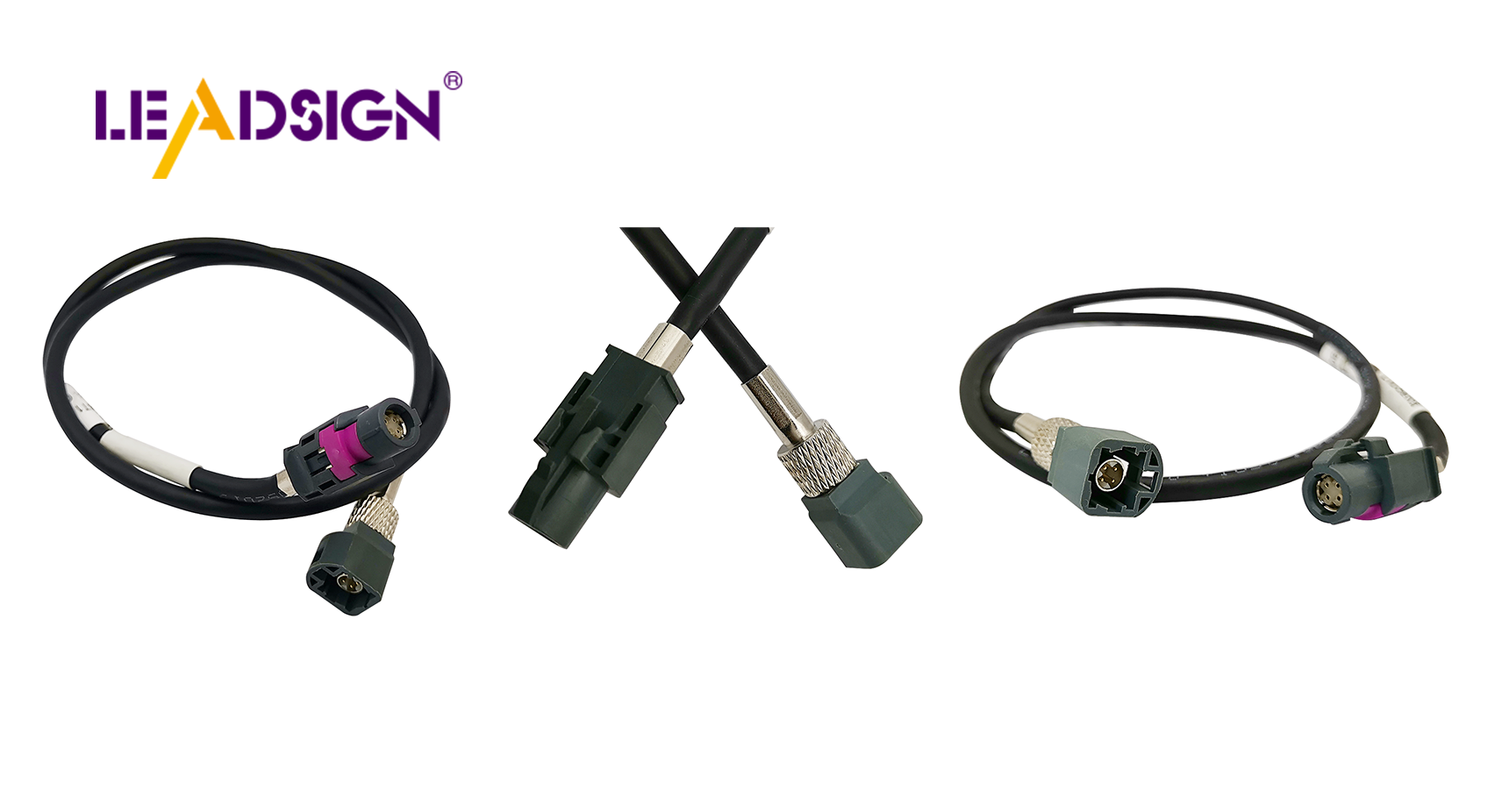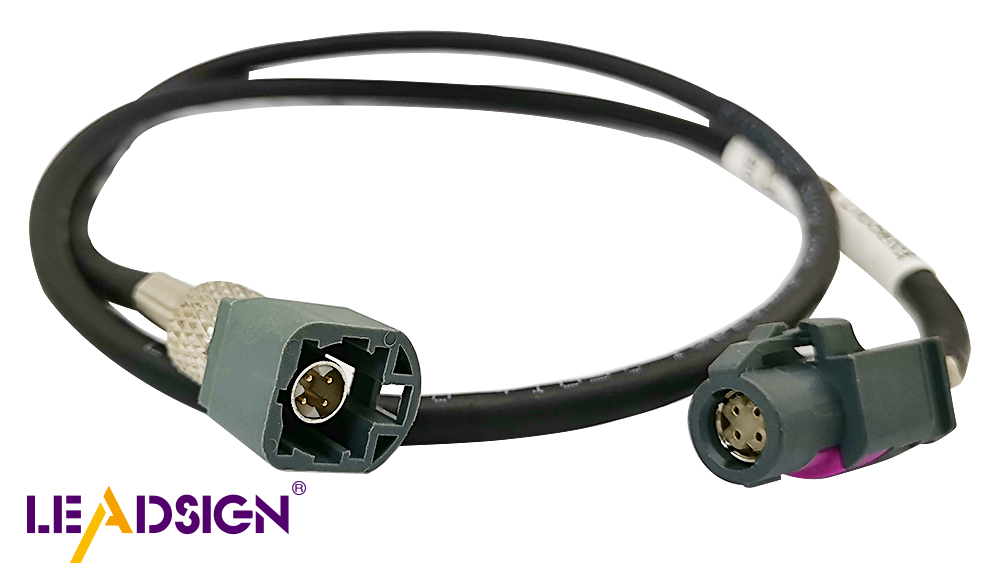A Complete Guide to Auto Wire Connector Types for Beginners

Automotive electrical connectors are crucial for your car's electrical system, ensuring that components function seamlessly together. Understanding the different automotive electrical connectors types is essential for beginners. This knowledge helps you make informed choices, keeping your car safe and efficient. By learning the fundamentals, you can tackle wiring tasks with confidence and avoid errors.
Understanding Auto Wire Connectors
What Are Auto Wire Connectors?
Definition and Purpose
Auto wire connectors are key parts of your car's electric system. They link wires so electricity moves easily between parts. This helps different electronic parts work well together. Without them, your car's electric system wouldn't work right.
Common Materials Used
Strong materials make auto wire connectors last long. Metals like copper and alloys help electricity flow well. The outside is often plastic or rubber to protect from heat and water. This keeps them safe inside the car.
Why Are They Important?
Role in Vehicle Safety
Good connectors stop rust and breakage, avoiding big safety problems.
Impact on Electrical Performance
Your car's electric system works best with good connectors. They keep connections steady so electronics run smoothly. Bad connectors can cause shorts or total failures. Picking good ones boosts your car's performance and life span.
Automotive Electrical Connectors Types

Knowing different automotive electrical connectors is key for your car's electric system. Each type has special uses, so pick the right one.
Crimp Connectors
Crimp connectors are common because they are easy and reliable. They come in many shapes for different jobs.
Types of Crimp Connectors
Bullet Connectors: These fit together tightly and are used in car lights.
Blade Connectors: Flat and slide into place, great for tight spots.
Pin Connectors: Used for strong connections like headlights.
Advantages and Disadvantages
Crimp connectors are strong and don't need soldering. They're quick to use but need a special tool. Bad crimping can cause weak links.
Solder Connectors
Solder connectors join wires by melting solder, making them permanent.
Types of Solder Connectors
Heat Shrink Solder Connectors: Combine solder with tubing for strength and cover.
Ring Solder Connectors: Attach wires to screws securely.
Pros and Cons
Solder connectors last long and stay tight. They take more time and skill to set up. You need a soldering iron to do it right.
Quick Connectors
Quick connectors make fast links without tools. They're good when you disconnect often.
Types of Quick Connectors
Push-On Connectors: Push wire in easily; used in car audio.
Snap-In Connectors: Snap into place quickly; used in dashboards.
Benefits and Drawbacks
Quick connectors are fast but not as strong as others. They work well for temporary use or frequent changes.
By learning about these types, you can choose wisely for your car's wiring needs. Each has its own pros and cons, so select what fits best for safety and efficiency.
Uses of Auto Wire Connectors
Cars and Trucks
How They're used in Cars
Auto wire connectors are important for a car's electric parts. They help all the electronic pieces talk to each other. You can find these connectors in many car areas like lights, engine controls, and music systems. They keep connections strong so your car works well.
Specific Examples
In cars, crimp and solder connectors are often used. Crimp connectors are in car lights because they work well and are easy to use. Solder connectors give a lasting hold and are used in important places like engine controls. These help your car's parts work safely and smoothly.
Other Places
Boats and Ships
Auto wire connectors aren't just for cars; they're used on boats too. On boats, they make sure things like navigation tools and lights work right. The sea is tough on stuff, so these need to fight rust and water damage. You'll see ones made from strong metals here.
Factories
In factories, auto wire connectors help machines run by linking parts together. They let power and data move easily between them. Places like manufacturing plants need these for their work. In phone networks, they keep signals steady at radio stations so calls don't drop.
Case Studies in Wire Harness Assembly show how different places use wire connectors for their jobs. These stories highlight good ways to pick the right connector for each task.
By learning where auto wire connectors are used, you see they're important beyond just cars. Whether it's cars, ships, or big machines, these help everything run smoothly.
Maintenance and Replacement
Taking care of and changing auto wire connectors on time keeps your car's electric system working well. Knowing when to change them and how to care for them can stop problems and help your car parts last longer.
When to Replace Connectors
Signs of Wear and Tear
Check your auto wire connectors often for damage signs. Look for:
Corrosion: Rust or color changes show water exposure.
Cracks or Breaks: Broken plastic or rubber means bad insulation.
Loose Connections: Wobbly connectors might cause electric issues.
Burn Marks: Burn marks mean overheating or short circuits.
If you see these signs, it's time to change the connectors to keep things working well.
Best Practices for Replacement
When changing connectors, follow these steps:
Turn Off Power: Always disconnect the battery before starting work.
Use Proper Tools: Use the right tools like crimpers or soldering irons for strong connections.
Select Quality Connectors: Pick connectors that fit your car's electric system needs.
Test Connections: After putting them in, check if they are tight and work right.
Following these steps makes sure you replace safely and effectively.
Maintenance Tips
Regular Inspection
Look at your auto wire connectors regularly to find problems early. Check for:
Tightness: Make sure all connections are tight and secure.
Cleanliness: Clean away any dirt around the connectors.
Integrity: Ensure there is no damage or wear on the connectors.
Regular checks help keep your car's electric system reliable.
Cleaning and Care
Cleaning and caring for your connectors stops rust and helps them last longer. Do this:
Use Contact Cleaner: Spray contact cleaner to remove rust and improve flow.
Dry Thoroughly: Dry completely before putting back together to avoid water issues.
Protect with Dielectric Grease: Add a thin layer of grease to stop moisture and rust.
By taking care of your auto wire connectors, you keep your car's electric system running smoothly.
Picking and Putting in Auto Wire Connectors
How to Pick the Right Connector
Choosing the right auto wire connector is very important. It helps your car's electrical system work well. Think about these things:
Things to Think About
Application Needs: Know what you need the connector for. Different connectors do different jobs, like blade connectors for tight spots or bullet connectors for lights.
Material Quality: Choose connectors made of good materials like copper or brass. These are great at carrying electricity and don't rust easily, so they last long.
Current Rating: Make sure the connector can handle your car's electric load. A weak connector might cause problems.
Environmental Conditions: Think about where you'll use the connector. For example, boats need connectors that resist water and rust.
Ease of Use: Some connectors are easy to put on and take off, like quick connectors. Pick based on how often you need to change them.
Mistakes to Avoid
Ignoring Specifications: Always check if it fits your car's system.
Using Low-Quality Tools: Use good tools when installing. Bad tools can break connectors.
Overlooking Maintenance: Check and care for connectors regularly to stop damage.
Installation Guide
Putting in auto wire connectors right makes your electric system work better. Follow these steps:
Step-by-Step Instructions
Turn Off Power: Disconnect the battery first for safety.
Prepare Wires: Strip wire ends cleanly with a wire stripper.
Select the Connector: Pick the right one for your job and wire size.
Attach the Connector:
For crimp types, push in the wire and crimp it tight.
For solder types, melt solder on wires for a strong hold.
Inspect Connection: Make sure it's tight with no loose wires.
Test System: Reconnect battery and test everything works fine.
Tools Needed
Wire Stripper: To remove insulation from wires.
Crimping Tool: To secure crimp connectors.
Soldering Iron: For solder connections.
Multimeter: To check if everything connects right.
By following these tips, you can pick and install auto wire connectors well, making your car's electric system better!
Helpful Tips and Questions
Advice from Experts
Professional Tips
Use Good Tools: Buy good tools like crimpers and soldering irons. They make work easier and more reliable.
Check Connections Twice: Always look at your connections. Make sure they are tight to stop future problems.
Label Wires: Label wires to remember where each goes. This makes fixing things easier.
Plan Before You Start: Plan your wiring before you begin. It helps avoid mistakes and saves time.
Common Mistakes
Skipping Checks: Not checking connectors often can hide damage.
Wrong Connectors: Picking the wrong type can cause bad performance. Match them to their job.
Ignoring Weather Effects: Not thinking about moisture can cause rust.
Frequently Asked Questions
Answering Common Concerns
How do I pick the right connector?
Think about what you need, material quality, and power rating. Match it to your needs.
What if my connectors keep breaking?
Look for wear or rust signs. Use the right type and take care of them well.
Can I mix different connectors?
Mixing is possible but not always best. Make sure they work together to avoid issues.
More Resources
Online Videos: Websites like YouTube have step-by-step guides on installing connectors.
Car Forums: Join forums to ask questions and share tips with others who love cars.
Books and Guides: Read car repair books for detailed info.
By using these tips and solving common worries, you can get better at using auto wire connectors.
You learned about auto wire connectors and why they matter. Knowing them helps you choose wisely for safety. As a beginner, keep practicing to get better. Using and caring for connectors stops problems and saves money. Good connectors last long and work well. Strong connections are key for your car's safety. Keep learning to improve your car skills.
See Also
An In-Depth Look at HSD Connectors
Exploring Fakra Connectors: Basics, Types, and Uses
All About Fakra Female Connectors
The Benefits of Fakra Connectors: Uses and Installation Advice

